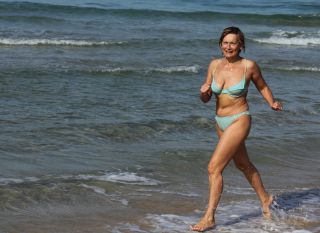
Depression
Depression and Body Dissatisfaction in Midlife Women
Why can’t we enjoy the female form in all its natural glory?
Posted August 8, 2014
Depression has long been known to relate to body dissatisfaction and eating disorders. Recent research indicates that women in their perimenopausal years may be vulnerable to depression, as depression is more common in times of hormonal change like menarche and menopause. Perimenopausal and menopausal women are also prone to developing body image dissatisfaction and eating disorders as they become more depressed about their appearance and are more likely to report feeling fat. In particular women aged 40-60 are especially vulnerable to bulimia nervosa, binge-eating disorder, and eating disorder not otherwise specified (e.g., compensatory (purging) behaviors for weight loss in the absence of full eating binges and despite normal weight, chewing and spitting out food), as they tend to both use food to cope and withhold food as punishment for being ‘fat.’ This may be even more common in women who have undergone surgically-induced menopause.
So what is a midlife woman to do about this? It’s time for a reality check. I've been studying how media images affect women's body image for over 15 years. It hurts us, seeing these 'perfect' women [By ‘perfect,’ I am referring to society’s body ideal for women; not truly ‘perfect’ women – there’s no such thing in my view]. We internalize those images, believing we should look like them, be like them. But we can't.
Why? In reality, even the models don't look like that. I applauded Cindy Crawford when she remarked, "I wish I looked like Cindy Crawford," alluding to the fact that even she - a supermodel - doesn't recognize herself on the cover. I gave kudos to Jamie Lee Curtis when she did a before and after photo shoot showing the 'real Jamie' v. 'magazine Jamie'. But most of us don't get to see the 'before' shots. The 'after' shots are our reality. They are what we see on every newsstand. What we compare ourselves to.
But who really looks like that? Not me. I bet not you. The average American model is 5'11" and weighs 115 pounds. The average American woman is 5'4" and weighs 163 pounds. Notice a discrepancy there? So why are we comparing ourselves to something that is not realistically attainable? Why can’t we enjoy the female form in all its natural glory?

I think we are beginning to see a trend in that direction. Teenage girls have started coming out against photoshopping magazine covers and the use of too thin models in fashion shows and on said magazine covers. What are midlife women doing about this though? Other than Operation Beautiful and Dove’s Real Beauty campaigns, I haven’t heard of many body image boosting campaigns targeting midlife women. If what’s lining our bookshelves is any trend, Cameron Diaz’s new Body Book and Glen Graves’ new Women of Spirit: Celebrating the Beauty of Women over the Age of 40 may be a step headed in the right direction. Even if you don’t agree with the viewpoints presented, at least they’re talking about it! But there is still more to do. Consider this your call to action. What are midlife women doing to combat body image issues? If you’d heard of anything, please leave it in the comments. Or if you have an idea, I’d love to hear it!

